

Flipped Classrooms - Center for Educational Innovation - University at Buffalo. How to better use your time with students.
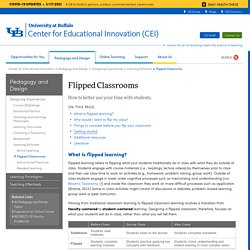
Flipped learning refers to flipping what your students traditionally do in class with what they do outside of class. Students engage with course materials (i.e., readings, lecture videos) by themselves prior to class and then use class time to work on activities (e.g., homework, problem solving, group work). Outside of class students engage in lower order cognitive processes such as memorizing and understanding (see Bloom's Taxonomy) and inside the classroom they work on more difficult processes such as application (Brame, 2013.) Some in-class activities might consist of discussions or debates, problem-based learning, group work or peer instruction. Moving from traditional classroom learning to flipped classroom learning involves a transition from faculty-centered to student-centered learning. Adapted from University at Austin, Faculty Innovation Center. A more productive use of class time. Researchers have found that: Flipped Classroom Workshop – Flipped Teaching and Learning Professional Development and Resources.
The Tech Edvocate’s List of 86 Flipped Classroom Apps, Tools & Resources. The traditional model of teachers lecturing in the classroom and students completing practice and homework on their own is changing.
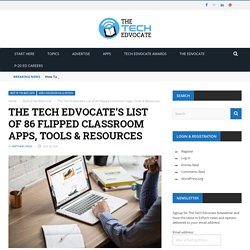
Instead, students are learning on their own and using the classroom as a place to dig more deeply into what they’ve learned. This model, known as the flipped classroom, is gaining popularity thanks to the rise of EdTech. Best Apps and Websites for the Flipped Classroom. 20 engaging flipped learning apps for in the flipped classroom. This digital age makes it more and more possible to flip the classroom.
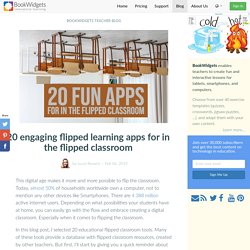
Today, almost 50% of households worldwide own a computer, not to mention any other devices like Smartphones. There are 4 388 million active internet users. Depending on what possibilities your students have at home, you can easily go with the flow and embrace creating a digital classroom. Especially when it comes to flipping the classroom. In this blog post, I selected 20 educational flipped classroom tools. Let’s get started! 10 Tips for Your Best Flipped Learning Classroom Activities. As the modern classroom continues to change and grow, the flipped classroom model continues to be redefined.
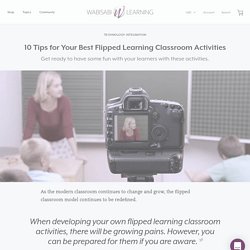
When developing your own flipped learning classroom activities, there will be growing pains. However, you can be prepared for them if you are aware. To help you out, here are some solutions to help you get the best from making your own videos/screencasts. 1. Writing the Script Keith Hughes does this well. 2. Check out this article from Andrew Douch on the best screencasting software for teachers. 3.
Although making your own videos is optimal when designing flipped learning classroom activities, content curation can help get the job done. 4. What do you do if a child has not viewed content? If students come to your class unprepared, don't re-lecture. 5. Not everyone will have technology at home to view the video. Create alternative methods for distributing your videos (e.g. 6. You will need a means of formative assessment for viewing videos. The Definition Of The Flipped Classroom. The Definition Of The Flipped Classroom As one of the most popular trends in education in recent memory, you’ve undoubtedly heard of the flipped classroom.
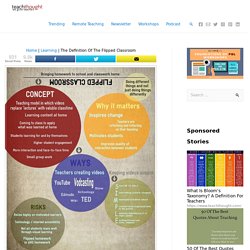
But what is it about a classroom that’s been flipped that makes it unique? A flipped classroom is a type of blended learning where students are introduced to content at home and practice working through it at school. This is the reverse of the more common practice of introducing new content at school, then assigning homework and projects to completed by the students independently at home. See also The Difference Between Synchronous Learning And Asynchronous Learning In this blended learning approach, face-to-face interaction is mixed with independent study–usually via technology.
The Flipped Classroom: Pro and Con. What It Is According to the description on ASCD's page for the newly released book, Flip Your Classroom: Reach Every Student in Every Class Every Day, by flipped-classroom pioneers Aaron Sams and Jonathan Bergmann, "In this model of instruction, students watch recorded lectures for homework and complete their assignments, labs, and tests in class.
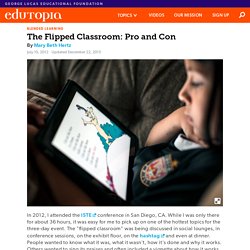
" In part one of a three-part series of articles, Bergmann, along with two co-authors, tries to dispel some of the myths surrounding the flipped classroom. For instance, they state that the flipped classroom is NOT "a synonym for online videos. When most people hear about the flipped class all they think about are the videos. It is the interaction and the meaningful learning activities that occur during the face-to-face time that is most important. " What It Isn't As with any new fad or trend, there are plenty of people trying to either use the model to make money or jump on the bandwagon without really understanding what they are joining.